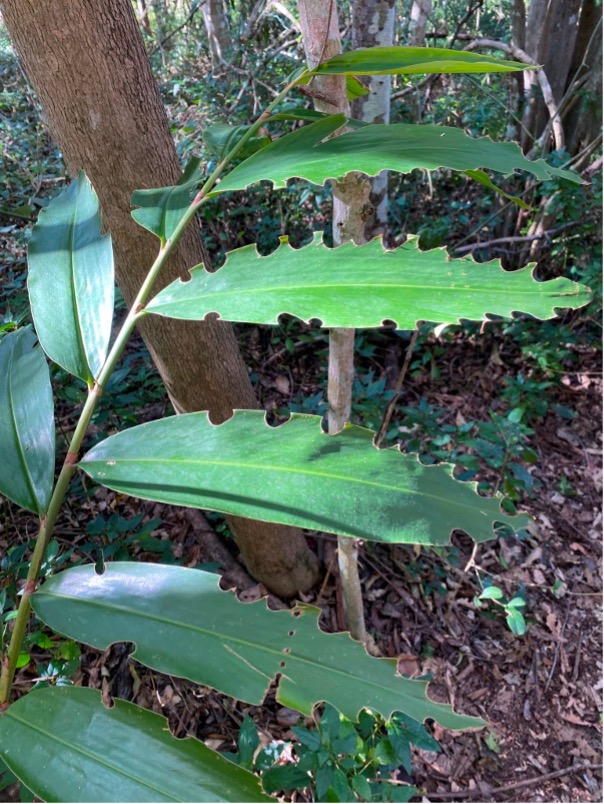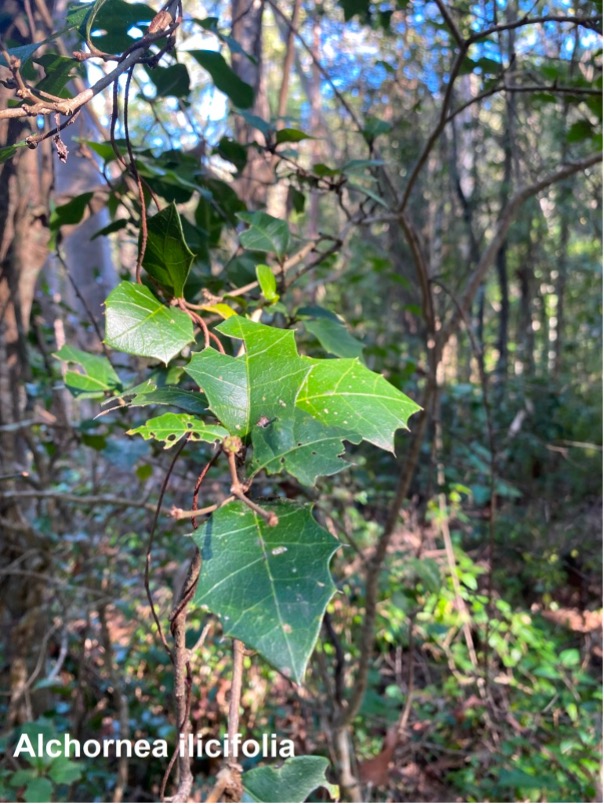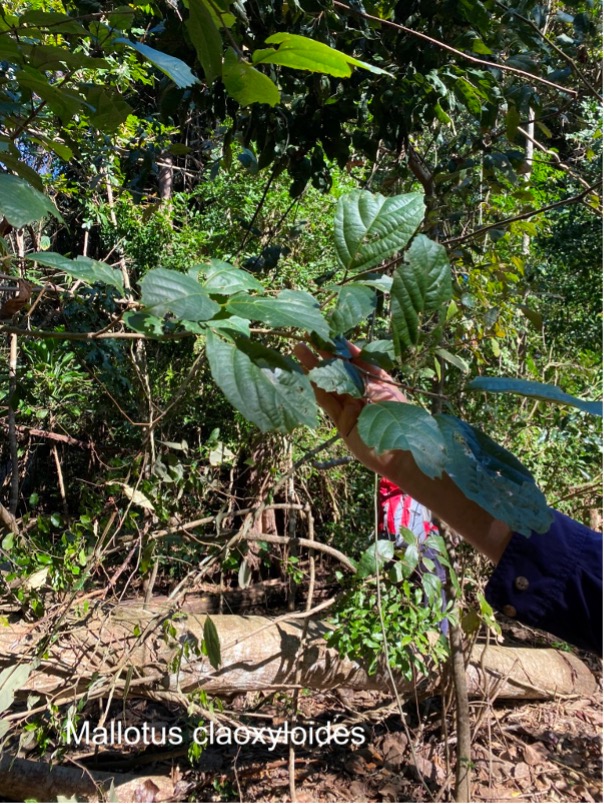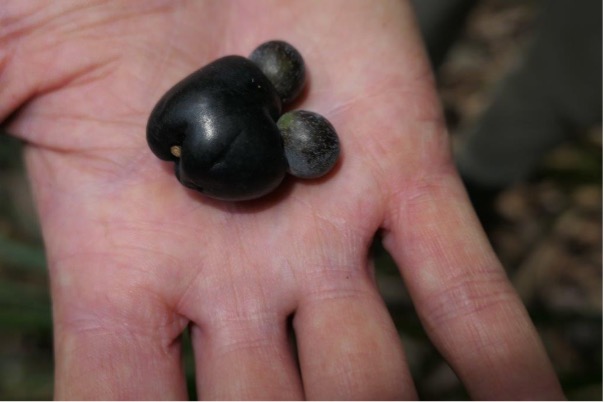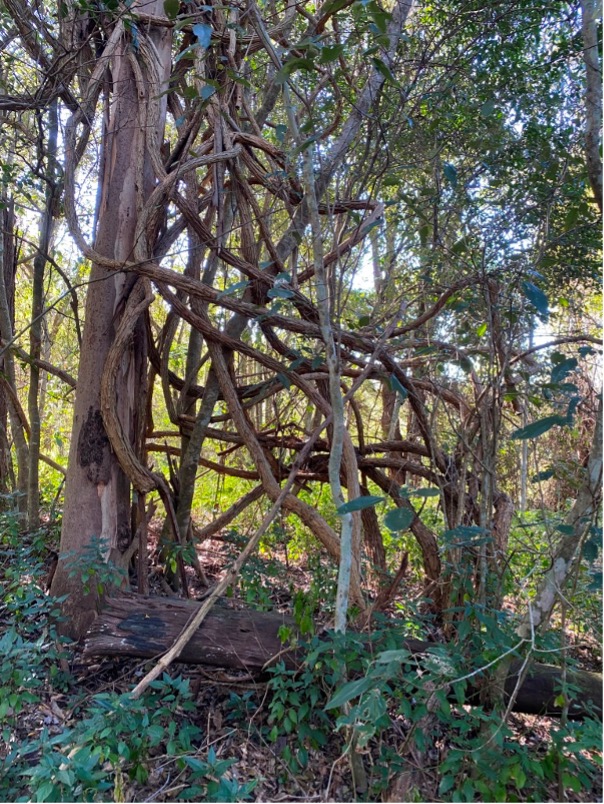
Excursion Report – McAfee’s Lookout to Enoggera Ck. – Held 22 July ’23
McAfee’s Lookout to Enoggera Ck. – Saturday July 22
Leader: David Bouchard
Nine Nats members took part in this excursion on a faultless July day. McAfee’s Lookout along the Mt Nebo road just happened to be a checkpoint this day for a trail running event which started from Mt Coot-tha. Fortunately the runners were not on the ridge we descended to the creek
This report will predominantly focus on the plants, though white cockatoos, yellow faced and scarlet honeyeaters were often heard in the background.
The ridge is clothed in tall eucalypt forest, common species were grey gum, iron bark and brush box, often with rainforest species as an understory. Due to past logging disturbance, lantana was a very common shrub. As we neared the creek the eucalypt forest was replaced by a dryer rainforest with emergent hoop pine. The creek itself was lined with weeping lillipilly Waterhousia floribunda.
We saw a number of the interesting things on the ridge. A very large woody vine about 20cm diameter and no easily observable leaves had us perplexed. Upon closer examination we noticed a few thorns and realised it was a very old cockspur thorn Maclura cochinchinensis. A native ginger with its leaves scalloped possibly by leaf cutter bees caught our eyes. And quite common was the native holly Alchornea ilicifolia, so named because the resemblance of its foliage to the European holly, Ilex.
Six of us then continued to Enoggera Ck, which after record flooding in 2022 had since receded to a stony bed and shallow pools. Here we got a good look at a “smell of the bush” plant Mallotus claoxyloides which is more often smelt than seen. Judy then kindly took five of our group back up the ridge to a rapturous welcome at the top by the trail running officials. While four of us continued beside Enoggera Ck through the “dry” rainforest, and returned by the fire break. Of note was a python tree probably Gossia bidwillii with smooth mottled bark and a large spreading root system, and the plum pine Podocarpus elatus. The plum pines do not have their seeds in a cone; rather they are born at the end of a fleshy “plum”.
Cockspur Thorn Vine Maclura cochinchinensis
Native Ginger Alpinia caerulea – leaves scalloped possibly by leaf cutter bees
Native Holly
“Smell of the Bush” plant
Brown or Plum Pine Podocarpus elatus showing two seeds attached to a fleshy “plum”

